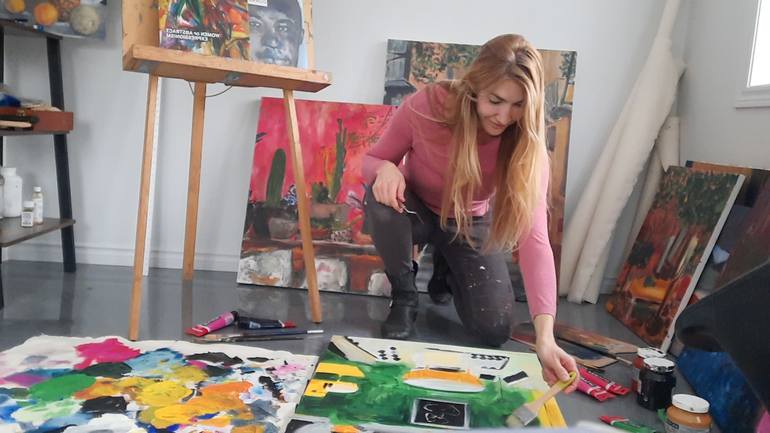Emotional Expression in Photo-Based Paintings
In the world of art, the interplay between emotion and expression has always been a captivating subject. For professional photographers, understanding this dynamic in a unique hybrid of photo-based paintings can offer a rich and rewarding exploration. These artworks create an intriguing intersection where the precision of photography meets the emotional resonance of painting, allowing for a compelling narrative told through color and form.

Understanding the Basics of Photo-Based Paintings
At its core, a photo-based painting begins with a photograph, capturing the raw, abstract emotions of a moment. This photograph serves as a guidepost towards creating something that transcends its origins. Artists use this photographic base to layer emotions and effects, turning a still image into a vibrant narrative that speaks to the viewer's heart.
The emotional expression in these paintings relies on the artist's ability to morph reality into a subjective experience. This transition requires not just technical skills, but a keen sense of interpretation that professional photographers can particularly appreciate due to their understanding of composition and lighting.
The Role of Emotion in Art
Emotions in art are the catalyst for connection, drawing viewers in and inviting them to project their fantasies and memories into the piece. In emotional expression through photo-based paintings, the artist manipulates basic photo elements, such as shadows and light, to enhance the emotional depth. This technique allows photographers-turned-painters to experiment with their art further.
Photo to Painting Process details how these elements govern the impact of your artwork, ensuring that the spectator sees beyond the canvas into the story you're telling.Techniques to Convey Emotional Depth
Artists often engage in specific techniques to convert photos into paintings that embody emotional nuances. Vivid color palettes, abstract applications, and texture are among the tools used to amplify emotion within the piece. Choosing the right color temperature, for instance, can evoke feelings of warmth or coldness, peace or chaos. Moreover, the textures applied to the painting can reflect the photo's story, adding layers of complexity and intrigue.
The Intersection of Photography and Painting
Professional photographers have a unique advantage when stepping into this art form. Their understanding of photographic elements can significantly enhance the emotional depth achieved in their paintings. The play between stark realism and painterly abstraction allows photographers to resonate emotional expressions within their work, enabling them to create art that evokes a visceral response.
For those curious about enhancing their artistic repertoire, the article Digital Photo Painting offers insights into combining digital and traditional mediums to elevate your creations further.
Illustrating Emotion Through Light and Shadow
Everything in photography and painting begins with light. It can highlight, obscure, or completely transform the mood of the image. By emphasizing different lighting techniques, photographers can shift the mood and emotional impact of the image to meet their artistic vision.
Learning how to manipulate light and shadow effectively is a skill that can set a photo-based painting apart, rendering emotions authentically and evocatively. Visit Color Theory for more insights.
Conclusion: Expressive Storytelling Through Art
As you delve into the world of emotional expression in photo-based paintings, consider the stories you wish to tell. Through skillful manipulation of colors, textures, and light, you can create paintings that are not only visually arresting but also emotionally stirring. These works have the power to move the viewer, provoking thought, and inviting reflection.
For those eager to redefine their artistic journey, Abstract Ideas can serve as a wellspring of inspiration, showcasing the dynamic possibilities of intertwining photography and painting.

FAQs
What defines a photo-based painting?
A photo-based painting begins with a photograph and transforms it into a painting that emphasizes emotional and artistic interpretation over realism.
How can photographers transfer emotion into paintings?
Photographers can use their understanding of composition, light, and shadow to manipulate emotional elements in their paintings.
Are there any challenges in creating photo-based paintings?
One challenge includes ensuring the emotional message isn't lost during the transformation from photo to painting, which requires skillful technique and artistic vision.

